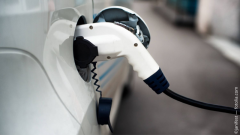Charging

How to “Fuel” Electric Vehicles
Electric vehicles (EV) and plug-in hybrid vehicles (PHEV) for the European market are generally prepared for both AC and DC charging. Ultra-fast charging is achieved by high-power DC charging and is required for a quick refill on the road. To charge the battery to 80% in 10-20 minutes, a charging power of 50kW to 350kW is required. The main power conversion and the charger are located in the charging station, the so-called electric vehicle supply equipment (EVSE).
For AC charging, on the other hand, power conversion takes place mainly on board. The difference between AC charging (3 phases fast and 1 phase slow) and DC charging is the comparatively low power level of up to 22kW for AC charging. AC Charging is mainly intended for longer charging cycles, e.g. during the night or working hours.
Our Competence in Charging
CODICO has already implemented various projects:
- In-Cable Control and Protection Devices (ICCPD) - Level 1 Charging
- Wallboxes - Level 2 Charging
- Charging Stations
- On-Board-Charger (OBC)
While the ultimate target is to charge the battery, the applications show a wide range of different requirements. CODICO can offer a portfolio of commodity, customized and semi-customized products that meet the specified standards. On request, we will support you with customized magnetic components and a wide range of film capacitors for filtering, PFC and LLC circuits. Our scale-iDrivers, shunt resistors and leakage current sensors complete the package for the power stage.
